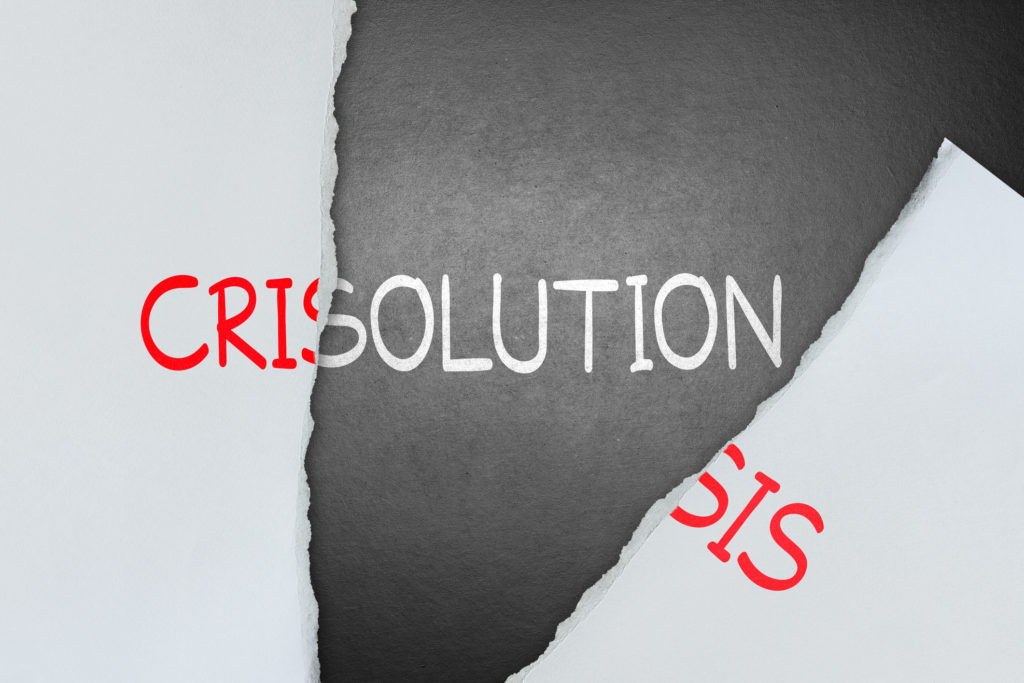Media Training Report 8: 7 Elements of an Effective Public Apology

Although it happened many years ago, the 2011 sexual abuse crisis that rocked Penn State remains a classic example of how to react and how not to react to a crisis.
In November 2011, Penn State was facing allegations that former Penn State assistant football coach Jerry Sandusky had repeatedly sexually abused minors. (He was found guilty of 45 charges the following year.) In addition, top university officials were alleged to have failed to act on reports of the misconduct. With the story dominating the headlines, the University’s Board of Trustees issued this statement:
“The Board of Trustees of The Pennsylvania State University is outraged by the horrifying details contained in the Grand Jury Report. As parents, alumni and members of the Penn State Community, our hearts go out to all of those impacted by these terrible events, especially the tragedies involving children and their families. We cannot begin to express the combination of sorrow and anger that we feel about the allegations surrounding Jerry Sandusky. We hear those of you who feel betrayed and we want to assure all of you that the Board will take swift, decisive action.
At its regular meeting on Friday, November 11, 2011, the Board will appoint a Special Committee, members of which are currently being identified, to undertake a full and complete investigation of the circumstances that gave rise to the Grand Jury Report. This Special Committee will be commissioned to determine what failures occurred, who is responsible and what measures are necessary to insure that this never happens at our University again and that those responsible are held fully accountable. The Special Committee will have whatever resources are necessary to thoroughly fulfill its charge, including independent counsel and investigative teams, and there will be no restrictions placed on its scope or activities. Upon the completion of this investigation, a complete report will be presented at a future public session of the Board of Trustees.
Penn State has always strived for honesty, integrity and the highest moral standards in all of its programs. We will not tolerate any violation of these principles. We educate over 95,000 students every year and we take this responsibility very seriously. We are dedicated to protecting those who are placed in our care. We promise you that we are committed to restoring public trust in the University.”
The board’s apology was spot on – a model for other organizations to follow when embroiled in a crisis.
Too bad it wasn’t Penn State’s first response.
Three days earlier, then president Graham Spanier had blown the chance to strike a conciliatory chord with an initial statement that gave scant recognition to the emotional toll this news took on victims and their families and the entire university community. Instead, it primarily focused on his unequivocal support of fellow colleagues who failed to act on the complaints of abuse:
“The allegations about a former coach are troubling, and it is appropriate that they be investigated thoroughly. Protecting children requires the utmost vigilance.
With regard to the other presentments, I wish to say that Tim Curley and Gary Schultz have my unconditional support. I have known and worked daily with Tim and Gary for more than 16 years. I have complete confidence in how they have handled the allegations about a former University employee.
Tim Curley and Gary Schultz operate at the highest levels of honesty, integrity and compassion. I am confident the record will show that these charges are groundless and that they conducted themselves professionally and appropriately.”
Within days, all three were no longer working at the school.
Ineffective, tone-deaf, inauthentic, or tepid amends can ignite an intense backlash. So, how do you get it right? By being genuine and prepared. While that might sound counterintuitive, they are not mutually exclusive.
In this report, we offer seven elements that make an apology more effective, as well as several other components to consider when preparing a public mea culpa.
7 Elements of an Effective Apology
The public apologies that are most successful, effective, and enduring share certain elements that help to reduce the offense or hurt and repair the rift. Not every apology will include all of them. However, research has found the more components you include, the more effective your apology will be.
A good apology is:
1. Empathetic
 If you can’t understand why, have failed to consider, or refuse to accept why other persons or parties are offended or hurt by your or your organization’s actions or the actions of someone you supervise, are aligned with, or support, it will be supremely challenging to present an effective, authentic apology. To truly understand how your audience feels, you need to see the crisis from their perspective.
If you can’t understand why, have failed to consider, or refuse to accept why other persons or parties are offended or hurt by your or your organization’s actions or the actions of someone you supervise, are aligned with, or support, it will be supremely challenging to present an effective, authentic apology. To truly understand how your audience feels, you need to see the crisis from their perspective.
Customers, shareholders, clients, supporters, or fans will quickly sniff out a disingenuous apology. They want to see that you “get” why an apology is needed.
In our Penn State examples, the board “hears” and understands the betrayal. Spanier’s statement, however, seemingly suggests his perspective is the only one that matters.
Be careful, however, about using any well-intentioned, but potentially inflammatory statement such as, “We understand how you feel,” during an emotionally charged situation. Simple and sincere acknowledgements are usually best, such as “We hear you” or “We get that you have deep concerns.”
2. Accountable

Here’s where you own it. You take responsibility for and address how you plan to deal with the crisis – even if you are not directly responsible for the situation. Of course, if you or your organization (or an employee) made the mistake, you must take ownership of that failure. These need not be long-winded accounts. Simple statements can be very effective, such as:
- “We made a mistake.” (Rather than “Mistakes were made.”)
- “We failed.” (As opposed to “Failures do and can happen.”)
- “It’s our fault.” (In contrast to “We accept our role in this matter.”)
- “I screwed up.” (Versus “It is human to err, and I am no exception.”)
The board is clear about its role in addressing the report of allegations by promising “swift, decisive” action. In contrast, the former president largely distances himself, and by inference, the other university officials, from the crisis, and offers a vague promise of investigation.
We would be remiss if we did not point out that there could be legal ramifications for offering an apology, even though some researchers suggest such caution may be overblown. We address additional considerations about legal liability later in this post.
3. Remorseful
Include words that convey genuine regret or remorse for having caused pain, anxiety, hurt, loss, inconvenience, lack of trust, etc., because of your actions or the actions of someone you are closely affiliated with. Or, you may feel regret or remorse for being involved or associated with a bad situation.
Your tone should be spot on, too. Remorse and regret only work when you mean it.
An apology that throws the behavior back on whoever is offended is a sign you are still stung by the criticism. Deep down you may not believe you need to apologize. “I’m sorry to those of you who were offended,” pales to “I’m sorry we were insensitive.”
The Penn State board, while not directly acknowledging “regrets,” addresses what it is remorseful for – a loss in public trust:
“We promise you that we are committed to restoring public trust in the University.”
4. Specific
You expressly cite your offense. What was the exact blunder or result? A betrayal of trust? Death? Injuries? Financial ruin? Damaged reputation? Insensitivity? Inconvenience? Unnecessary fear and anxiety?
A less-than-specific apology may make your intended audience wonder if you know why you are apologizing.
The Penn State board’s statement clearly identifies the allegations of sexual abuse and the impact it has had on the children and families who experienced it. Spanier’s accounting is little more than vague statements about the situation.

5.Unequivocal
Given the core of any apology is only two words – “I’m sorry” – layering a public apology with legalese, technical terms, euphemisms, abstract phrases, hedges, and convoluted logic will take all the effectiveness right out of it. You can make your apology more effective by:
Using concrete, evocative words. (“Outraged,” “Betrayed,” “Horrifying,” “Sorrow”)
Issuing clear and direct statements. (“There will be no restrictions.”)
Avoiding abstract phrases or euphemisms. (What is a “presentment?”)
Avoiding defensiveness. Banish “but” or “however,” as these words tend to negate everything that came before them. It’s ineffective to apologize and defend yourself in the same sentence. So, if the first part is your apology, and you follow that with a “but,” you’ve effectively negated all that came before it. It’s a case of “Sorry, not sorry.”
Offering no excuses. When the ship is going down, the crew doesn’t want to hear the captain gripe about the independent contractor whose faulty workmanship led to the leak. They want to know what he is going to do to keep them from sinking. Similarly, the public may want to know why things went wrong but are less interested in finger-pointing or blame-shifting. That said, an apology can recognize the faulty workmanship of an independent contractor, but should offer a plan of how you will prevent a similar situation from happening in the future.
6. Properly aligned
The most effective apology addresses the proper audience with the proper message.
Before you seek public atonement, you should ask yourself several questions:
- Who are you apologizing to and why?
- Is your apology addressing the correct offense?
- Does your apology speak to what your customers expect and need from your brand?
- Have you connected your words to the values and missions of your organization?
In an unfolding crisis, many parties might be affected. An organization should consider who receives the high-profile apology that will broadcast into the public sphere. For instance, in the 2013 flap about Lululemon’s see-through leggings, now ex-CEO and founder Chip Wilson delivered a video apology to his employees rather than issue an apology to customers outraged about his fat-shaming comments.
Sometimes, the best approach solely focuses on customers who are affected. Perhaps a product only used by certain customers has the flaw. Other times, a broader approach to all your stakeholders that is aimed at rebuilding your image and reputation might work better.
In the Penn State example, the board broadly addressed the children, their families, and the school community. The former president – while not directly apologizing to his colleagues – appears to be far more concerned about their welfare than that of children who may have been sexually abused.

As you seek answers to the questions we posed, here are some helpful tips:
Keep your perspective squarely on the victims. If you are confused as to who that is, you’ll need to start back at empathy.
Identify the actual offense. Is this more a matter of outrage over lack of functionality or is this a high-stakes crisis with severe fallout, such as a tragic accident or horrifying behavior?
Know your stakeholders. What is their emotional attachment to your brand, product, or service? Do you serve to improve their lives in a purely functional way, or is your connection more aspirational or emotionally connected? For instance, your wi-fi service goes down for six hours. Do you want your provider offering platitudes and highly emotional calls for forgiveness or sorrow over your loss? Do you want an apology that zeroes in on how they made you feel? Or, do you want an apology that focuses on why they screwed up and how they intend to fix it?
Research suggests that the more effective apology strategies consider consumers’ emotional attachments. In apologizing, an organization can be more effective if it determines whether the slight is more about the lack of functionality, a ding on overall corporate or institutional values, or a combination of both.
Be clear about company mission and values. If you have a clearly defined mission and a set of values, or advocate a particular outlook, and the mistake violates any of those things, your apology can be more effective if you acknowledge where you fell short and how you are going to reclaim your moral compass.
7. Reassuring
What are you going to do about your misstep, mistake, or miscalculation?
Anecdotally and empirically, the best apologies include an offer to make things right (something as simple as “I won’t do that again.”) The public is listening for how they are going to be compensated for their hurt or loss whether it is a product recall, an insensitive campaign or remark, a criminal act, or some other crisis. And, further, if they can trust that the manufacturing defect, slight, or scandal, etc., will not happen again.
Effective reassurances may include:
- Clear details on restitution
- Announcement of new policies or procedures
- Promises to be more transparent
- Assurances of an independent investigation
- Pledge to hold those at fault accountable
- A commitment to change

Regard any promises as a contract with the public. Empty promises can be worse than not making any promise at all. So, make sure what you intend to do can be done. If you are less than successful, it can shake the public’s confidence for the present crisis, as well as any crisis in the future.
In the Penn State example, the board promised many of these things, including that the findings of the independent investigation would be made public. Spanier’s statement, again, seemingly appeared more focused on clearing the names of his colleagues. They may have been entitled to the benefit of doubt. However, the victims and broader school community should have been the intended audience. He would have been more effective speaking to their fears and concerns.
(A year after the scandal broke, the commitment to change was detailed by the Penn State Board of Trustees and university officials.)
When To and Who Should Apologize
While the elements of an apology are important, when you deliver your apology and who delivers it also speak volumes.
Timing
Two common phrases should guide the (and, incidentally, reveal the challenges of) timing your apology. While time is of the essence, haste makes waste.
You are most effective when you give the other person some time to air their concerns, annoyances, grievances, and hurts. Still, staying silent for too long is generally seen as a poor strategy.
When the mea culpa arrives quickly, it can suggest that executives are clear about their responsibility and sincere in their efforts to address the offense or anger. Still, there are instances when delaying a full-fledged apology is warranted – perhaps an investigation will more clearly reveal the problem and, consequently, the most appropriate restitution to take.
One of the more difficult gaffes in a crisis response is to overcome an initial and insufficient apology that falls flat. Public backlash to a poor apology can be swift and prompt a second apology. But, even if that second apology contains the right elements, it may be rendered ineffective because the timing looks reactive and forced rather than proactive and genuine.

Photo by Jeanne Rouillard on Unsplash
Here are a couple of steps to take:
- If you are still gathering the facts, or there is some other reason to be cautious, be prepared to issue a statement that, in effect, reserves the media bandwidth for the deeper, more comprehensive apology to follow. You can do that if in that first apology you indicate you are quickly investigating the facts, are sorry for what has happened so far, and plan to come back with detailed information as to how you plan to address the crisis.
- If the offense is not immediately evident or your assumptions of how consumers would perceive a campaign or product initially were wildly off, you could seek public comment as well as keep a vigilant eye on social media channels. By assessing stakeholders’ gripes, your apology potentially could be more specific and your plan to rectify the situation more targeted.
Delivery
It also matters who apologizes. An apology could fall flat if the person the company chooses doesn’t match the message.
Here are some scenarios to consider:
 Is it a high-stakes crisis that has affected many people and speaks to a core value or expectation that has been broken – or an integral product that has failed? Then, the apology should be delivered by the CEO or another senior leader.
Is it a high-stakes crisis that has affected many people and speaks to a core value or expectation that has been broken – or an integral product that has failed? Then, the apology should be delivered by the CEO or another senior leader.- Does the apology include an institutional change to ensure such a situation does not repeat itself? The person delivering it should have the power to make that change, something along the lines of: “Tomorrow, I will be implementing a company-wide policy change that will ensure the mistakes that led to this tragic situation will not happen again.”
- Is this more of a minor flap or is it a crisis that stands to rock the institution and its reputation for years to come? Just as it is not wise to trot out the CEO for every media interview, if the CEO atones for a relatively minor transgression, the public might think the crisis is bigger than they originally thought. Conversely, if you tap someone too low on the hierarchy chart, the public could think you are not taking a major incident seriously enough.
Other considerations
This post offers advice that likely applies to most crises. As with everything else, there are exceptions to the rule. While apologies can be an effective response to a crisis, there are times when apologies are not and should not be your only option.
There may be legal ramifications when a company or organization publicly apologizes. There are many constituencies to consider – from consumers and the media to shareholders and employees. And while an organization may want to own up, liability concerns might require constraint.
There are some excellent resources, including Keith Michael Hearit’s book Crisis Management by Apology: Corporate Response to Allegations of Wrongdoing, and Melissa Agnes’ book Crisis Ready: Building an Invincible Brand in an Uncertain World, that delve into when and how best to apologize. It’s worth considering, too, if there are moments when simply expressing sympathy or offering compensation would be as effect as an apology, as some studies have suggested.
To get you started, we leave you with some important questions to ask before issuing an apology. They come from Barbara Kellerman, a leadership expert at Harvard Kennedy School, in an article she wrote for Harvard Business Review. A half-dozen follow:
- Are you or your organization right? If so, could extending an apology serve your interests anyway?
- Are you or your organization wrong? If so, could extending an apology get you out of a tough situation?
- Why would an apology matter (strategic vs. moral reasons)?
- Will your apology placate the injured parties and hasten the resolution, or do the opposite and incite the opposition?
- Will an apology affect your legal jeopardy?
- What happens if you don’t – will the problem fade or will it make a bad situation worse?
When Apologies Work
Successful, effective, and enduring public apologies share certain elements that help to reduce hurt and repair rifts. They are generally delivered not too long after the transgression and by the person best suited to issue them. Prior to the announcement, the organization has considered and weighed the risks. It’s also worked with legal and communications staff to address the situation quickly and comprehensively – even if that means a two-part approach to the apology.
Hopefully, you or your organization will never have the need to apologize. But, if you do, we hope these tips and techniques will better help you to say: “I’m sorry.”
 Is it a high-stakes crisis that has affected many people and speaks to a core value or expectation that has been broken – or an integral product that has failed? Then, the apology should be delivered by the CEO or another senior leader.
Is it a high-stakes crisis that has affected many people and speaks to a core value or expectation that has been broken – or an integral product that has failed? Then, the apology should be delivered by the CEO or another senior leader.





